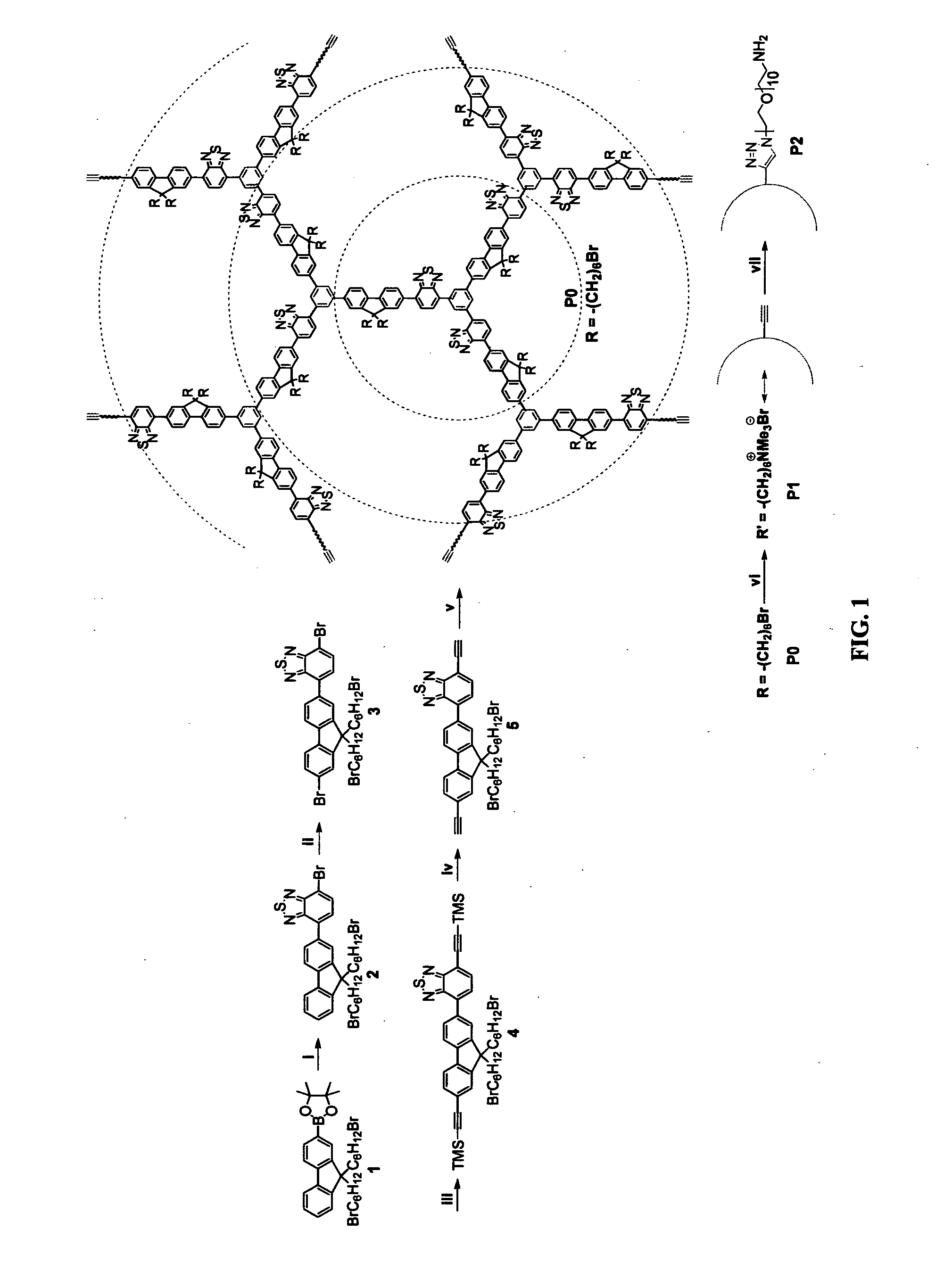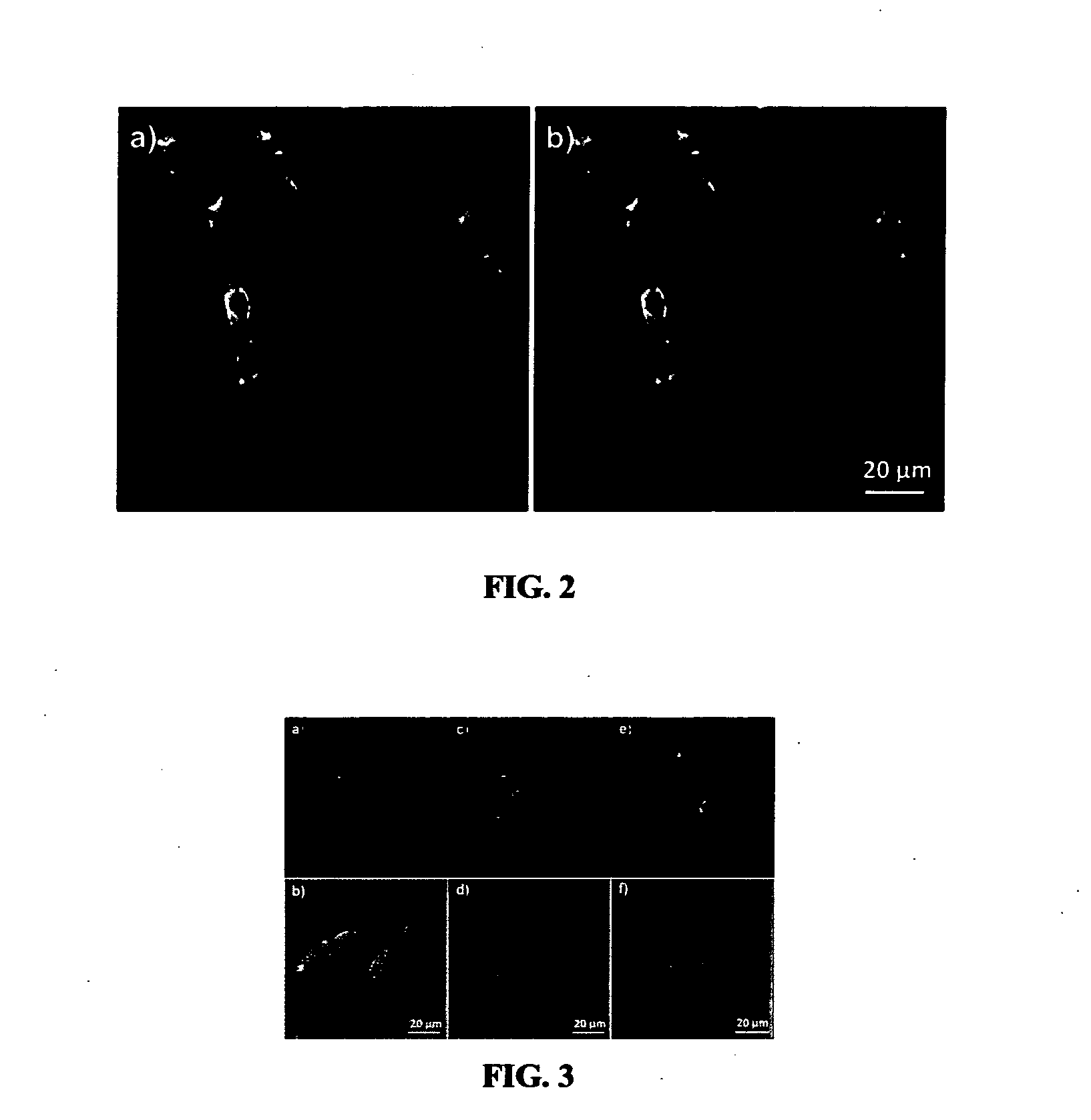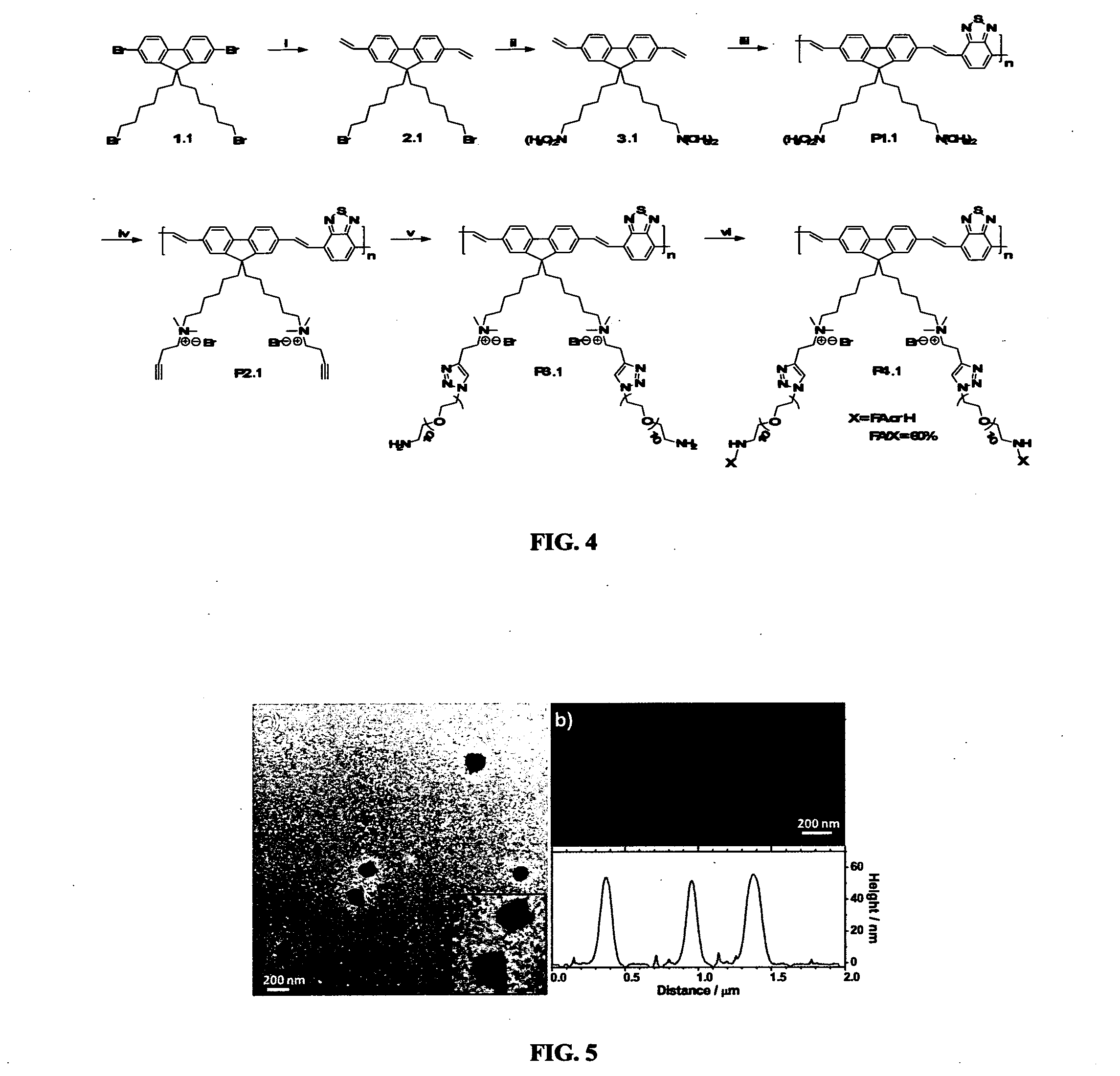Methods And Compositions For Cellular Imaging And Cancer Cell Detection Using Light Harvesting Conjugated Polymer-Biomolecular Conjugates
a technology of biomolecular conjugates and cellular imaging, which is applied in the field of compositions for cellular imaging and cancer cell detection using light harvesting conjugated polymerbiomolecular conjugates, can solve the problems of severe cytotoxicity, low photobleaching threshold, and difficulty in implementing such a strategy using cpes
- Summary
- Abstract
- Description
- Claims
- Application Information
AI Technical Summary
Benefits of technology
Problems solved by technology
Method used
Image
Examples
example 1
Synthesis of Biomolecule-Functionalized HCPEs
[0176]An affibody-attached hyperbranched conjugated polyelectrolyte (HCPE) was used for targeted fluorescence imaging of human epidermal growth factor receptor 2 (HER2) positive cancer cells. Early-stage detection of HER2 is of clinical significance in personalizing cancer treatment, because HER2 expression levels are closely related to tumor behavior and clinical outcome. Anti-HER2 affibody instead of commonly-used HER2-specific antibody (herceptin) was chosen as the recognition element, in view of its higher affinity for HER2 and smaller size (approximately 7 kDa) compared to herceptin (approximately 150 KDa). The HCPE (P2) used for bioconjugation was endowed with a unique core-shell molecular architecture to minimize nonspecific interactions with biomolecules and to facilitate bioconjugation and targeted cellular imaging.
[0177]The core-shell HCPE (P2) had a hyperbranched conjugated polymer as the fluorescent core and linear poly(ethyle...
example 2
Synthesis of a Folid Acid-Functionalized Molecular Brush
[0199]The molecular brush (P4.1) was synthesized via a stepwise “grafting onto” method involving click chemistry. P4.1 formed core-shell spherical nanoparticles in aqueous solution, wherein the PEG grafting chains constituted the shell layer encapsulating the charged, conjugated backbones. Such a self-assembled nanostructure not only resulted in a high PL quantum yield in aqueous solution (11%), but also led to minimal nonspecific interactions with biomolecules and suppressed nonspecific cellular uptake. These desirable biochemical and optical properties make P4.1 an effective FR / NIR cellular probe for discrimination and visualization of MCF-7 cancer cells from NIH-3T3 normal cells in a high contrast and selective manner. In view of its high photostability and low cytotoxicity, such a molecular brush based cellular nanoprobe holds great promises as an alternative to current stains such as QDs and silica nanoparticles for clinic...
example 3
Self-Assembly Properties of P2
[0212]High-resolution transmission electron microscopy (HR-TEM) shows that P2 self-assembles into spherical nanoparticles with an average diameter of 30 nm in aqueous solution. Moreover, these nanospheres possess a core-shell nanostructure, wherein the dark interior and the gray exterior correspond to the domains enriched with electron-rich conjugated segments and saturated PEG chains, respectively. Such a core-shell nanostructure is beneficial to both bioconjugation and cell imaging, as PEG shells could serve as a protective layer.
PUM
| Property | Measurement | Unit |
|---|---|---|
| Quantum yield | aaaaa | aaaaa |
| Stability | aaaaa | aaaaa |
| Fluorescence | aaaaa | aaaaa |
Abstract
Description
Claims
Application Information
 Login to View More
Login to View More - R&D
- Intellectual Property
- Life Sciences
- Materials
- Tech Scout
- Unparalleled Data Quality
- Higher Quality Content
- 60% Fewer Hallucinations
Browse by: Latest US Patents, China's latest patents, Technical Efficacy Thesaurus, Application Domain, Technology Topic, Popular Technical Reports.
© 2025 PatSnap. All rights reserved.Legal|Privacy policy|Modern Slavery Act Transparency Statement|Sitemap|About US| Contact US: help@patsnap.com



